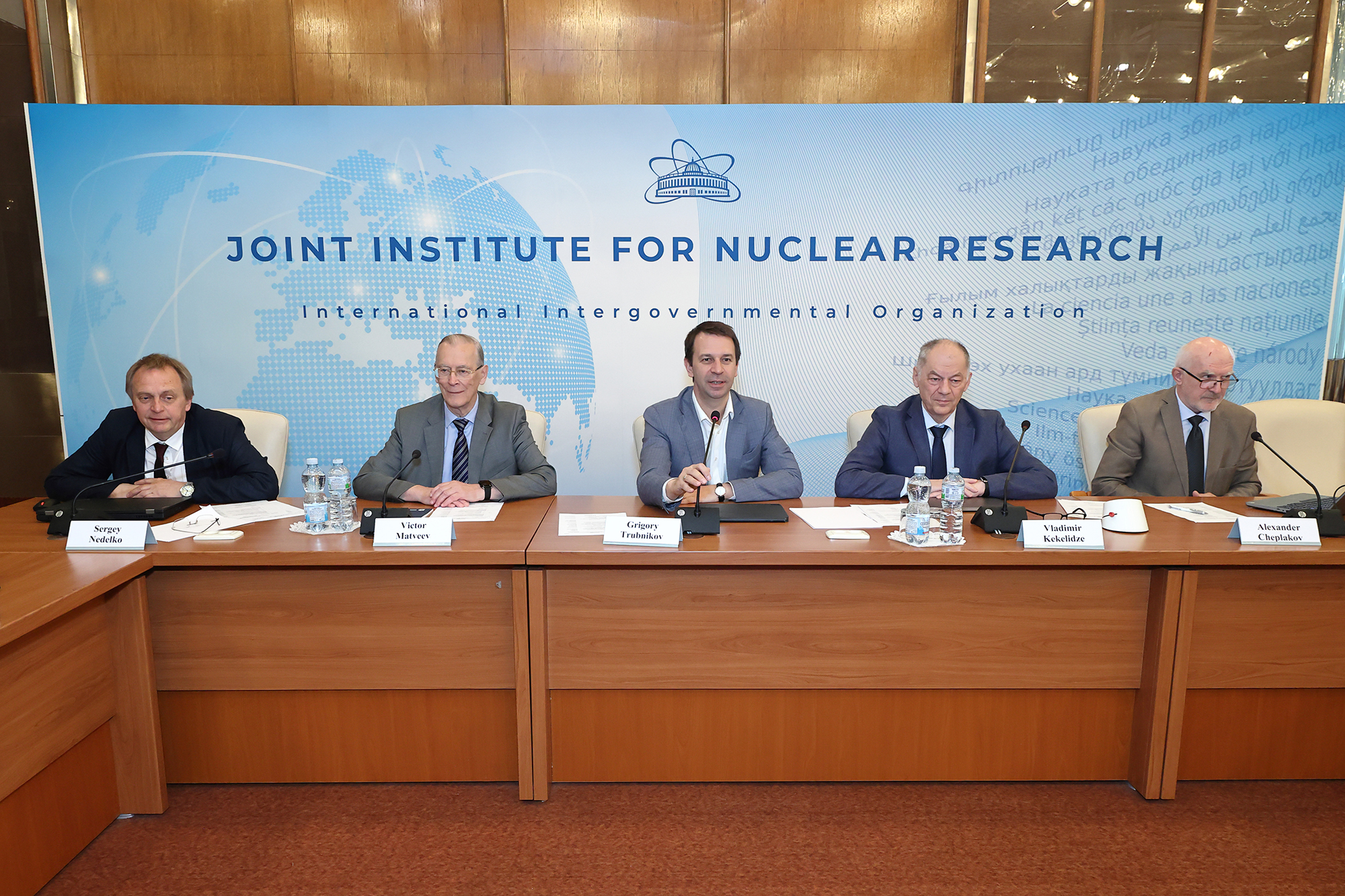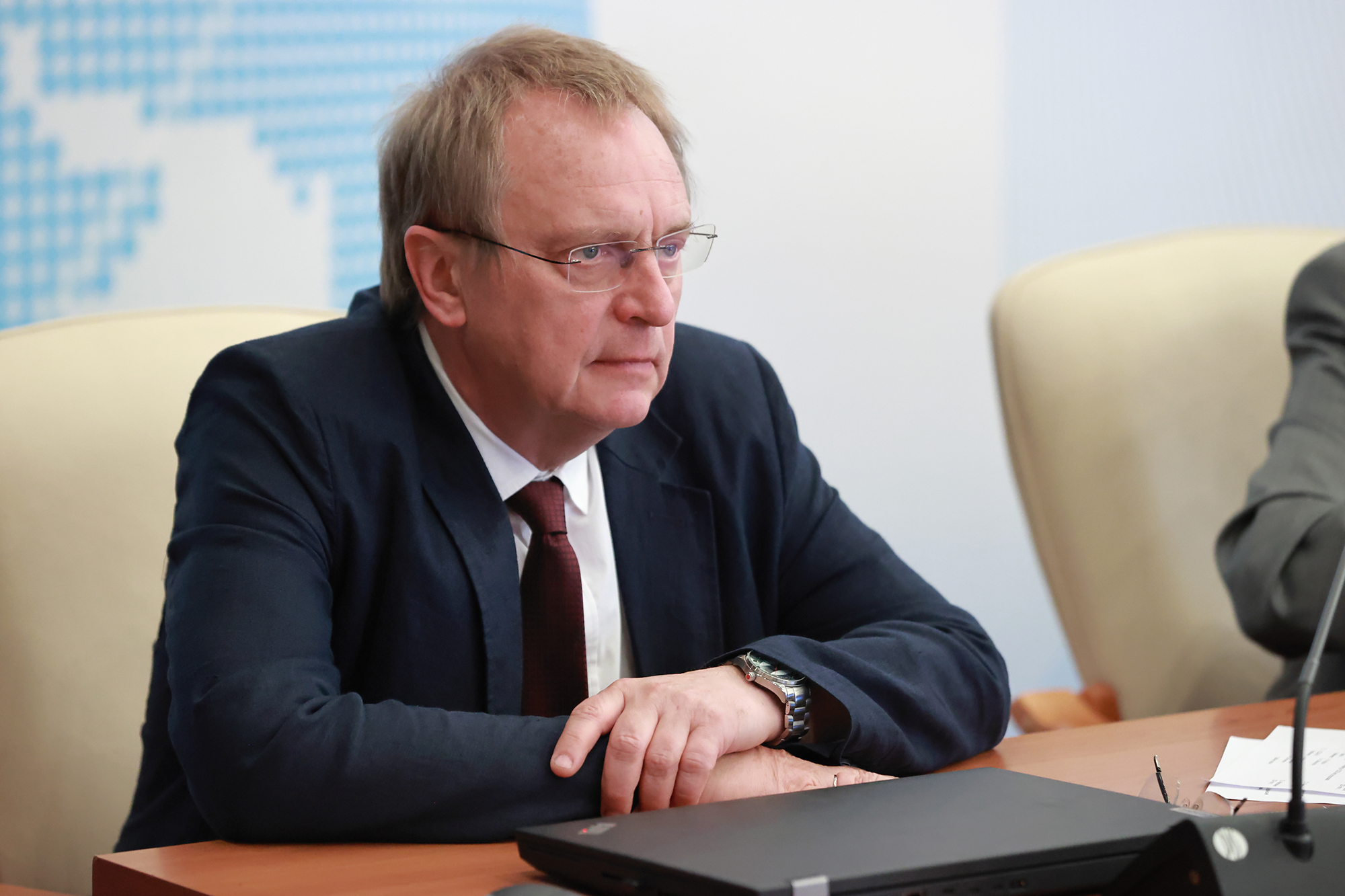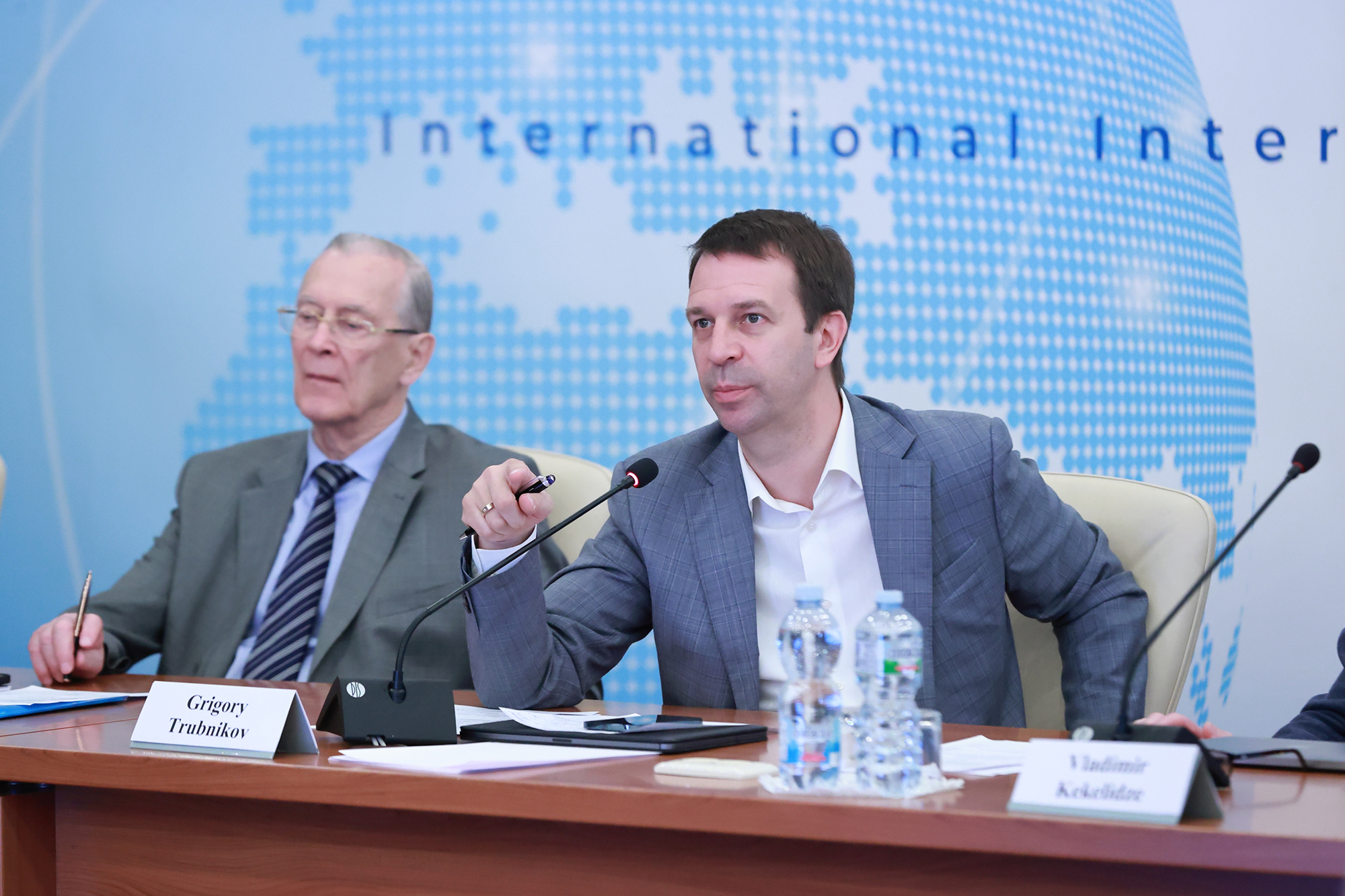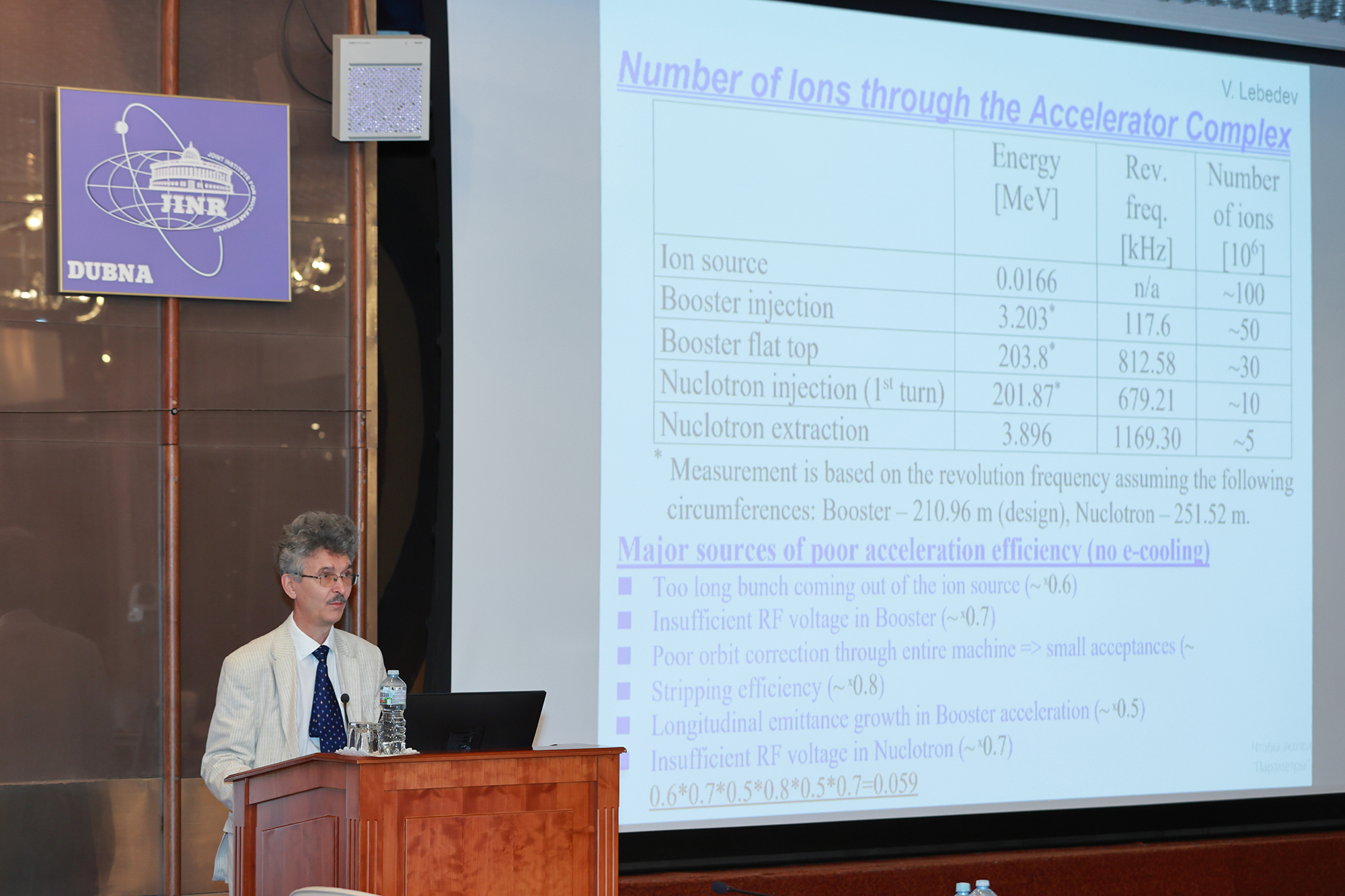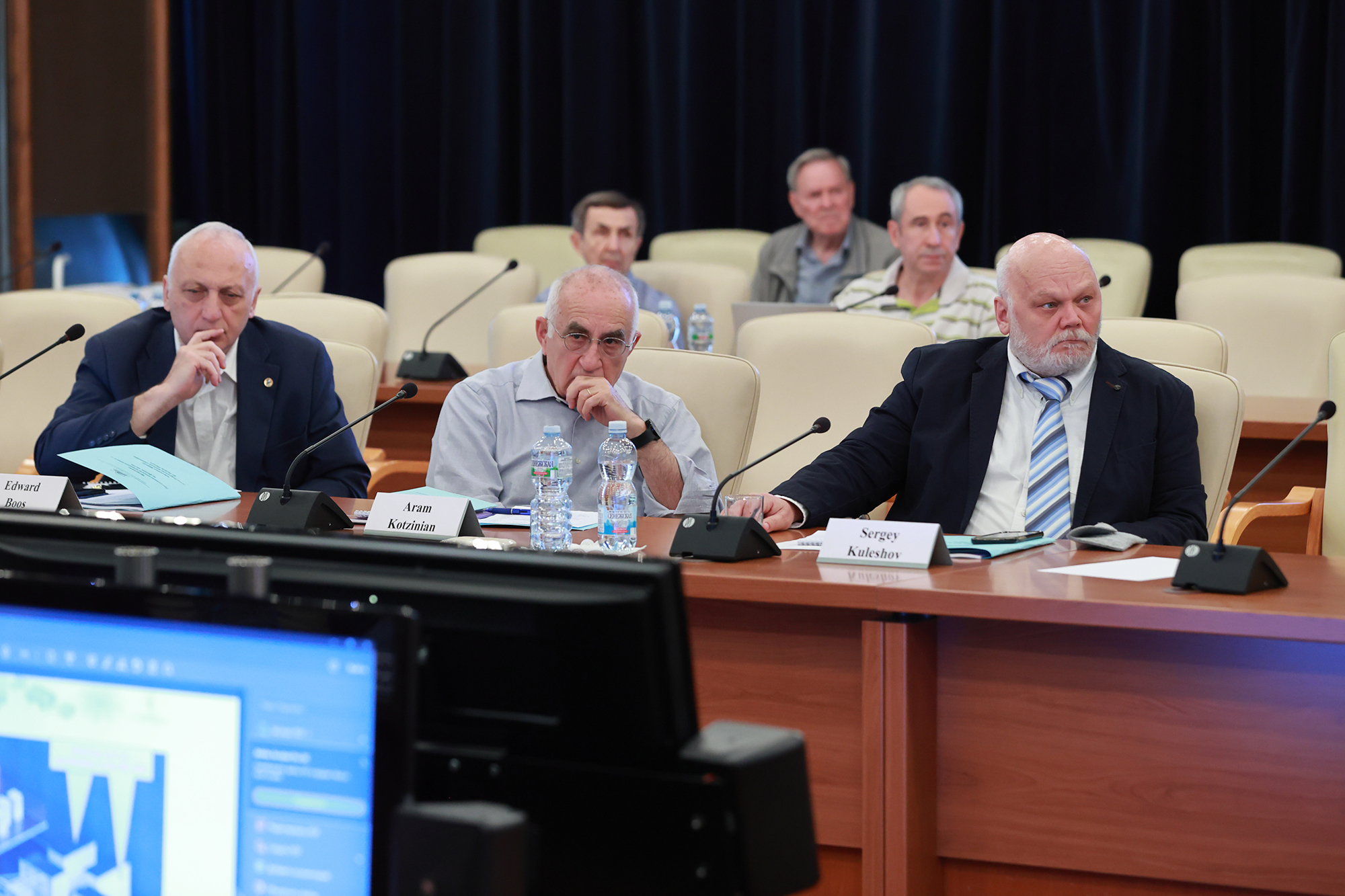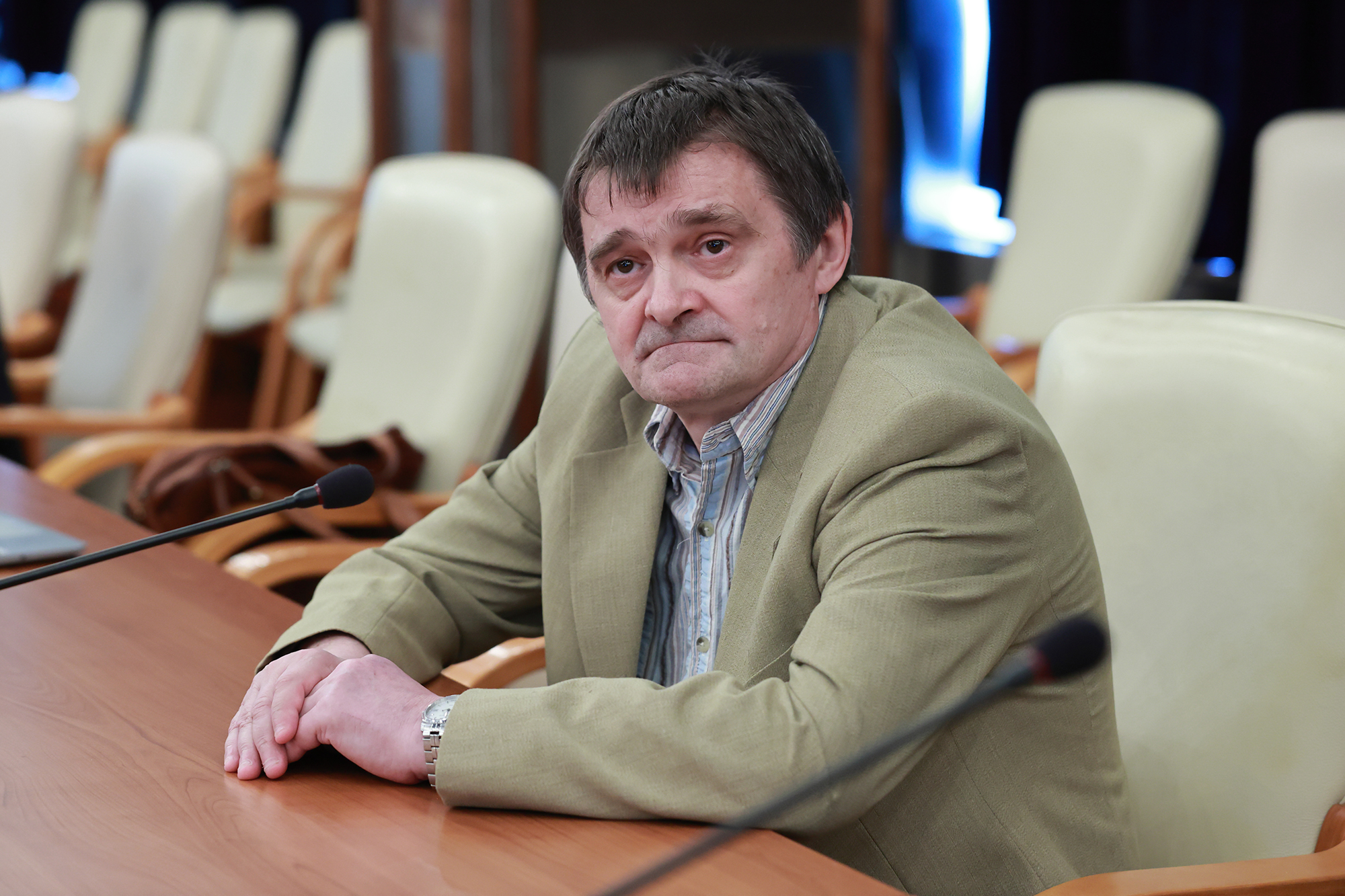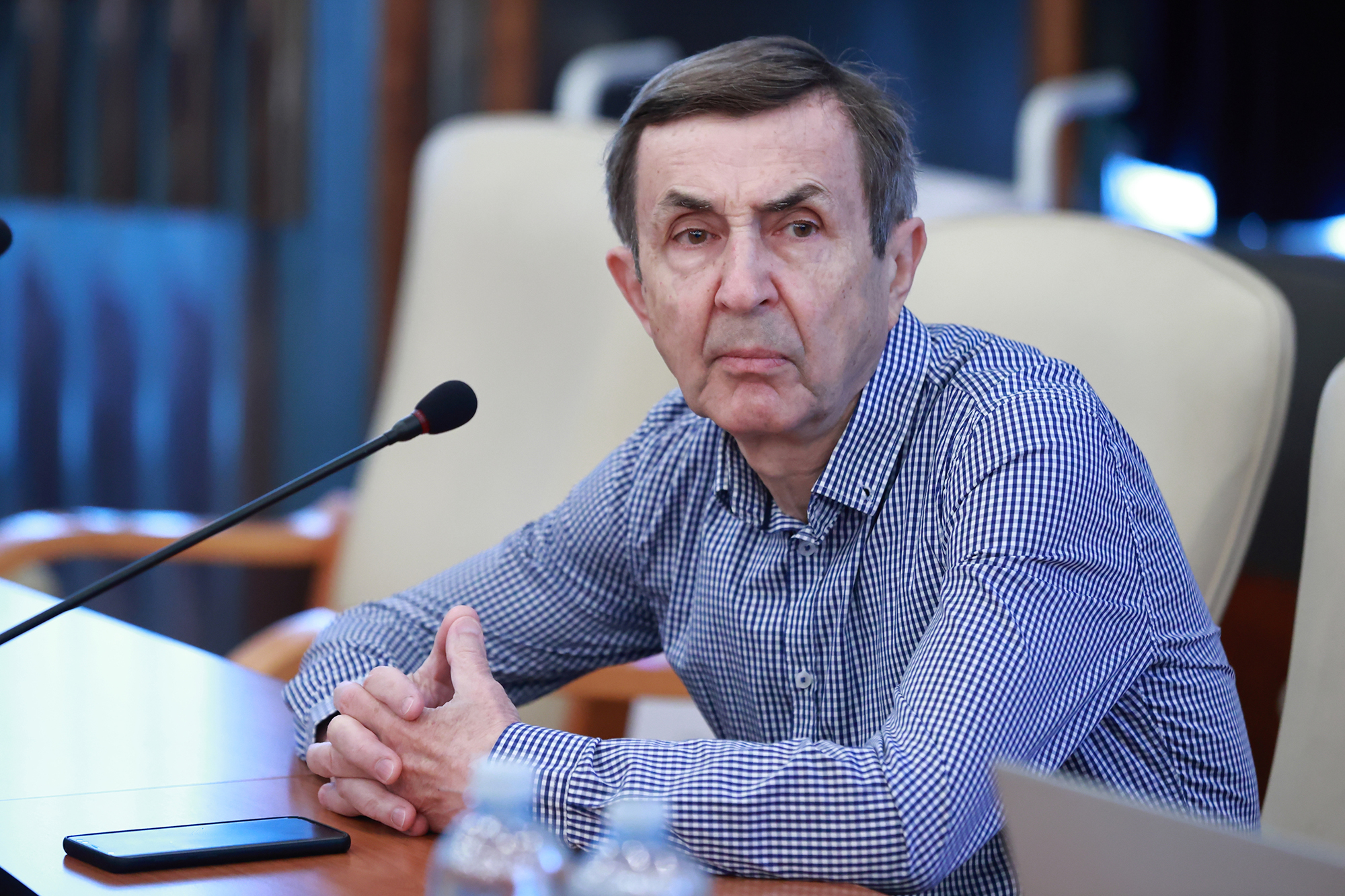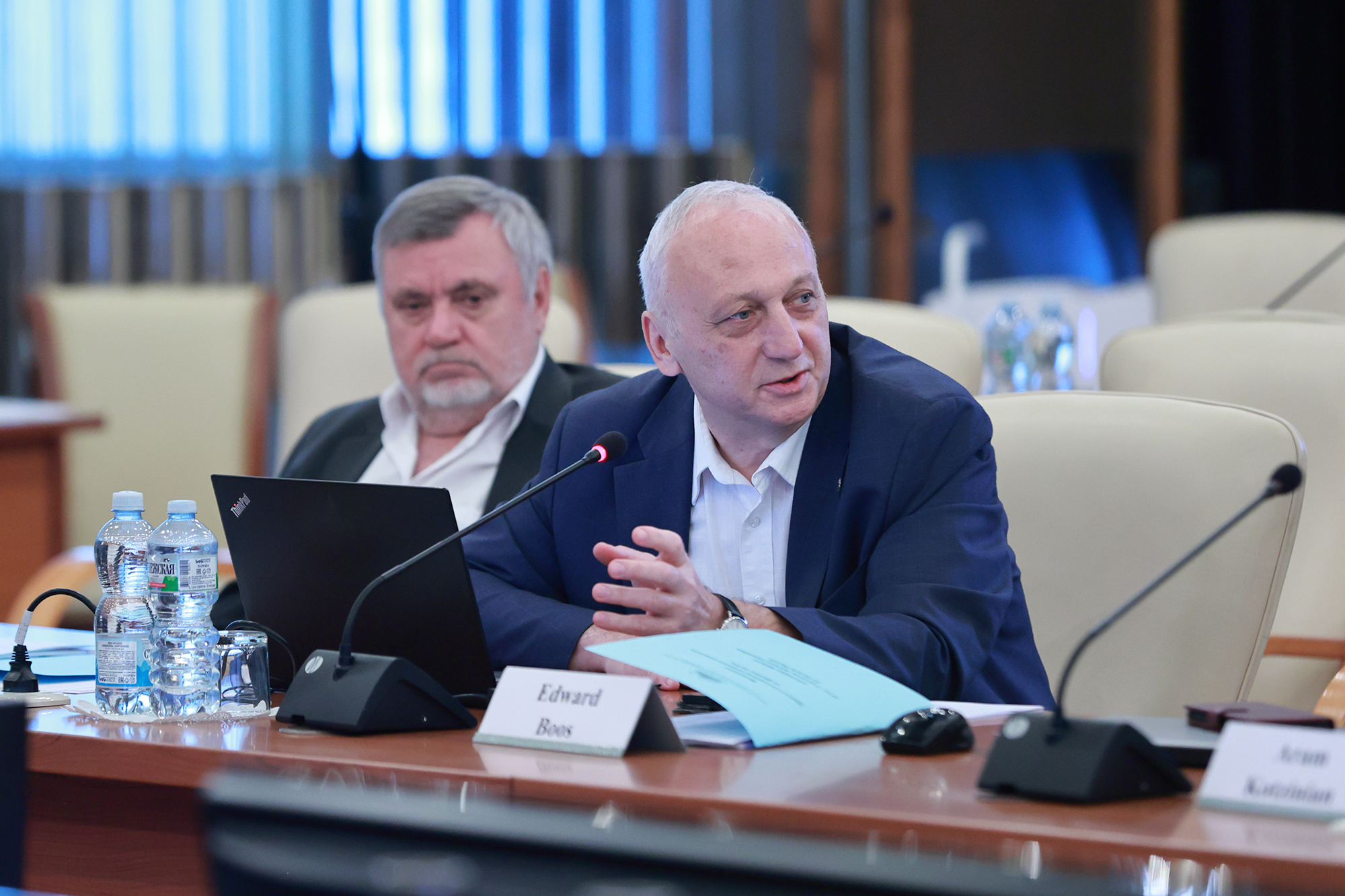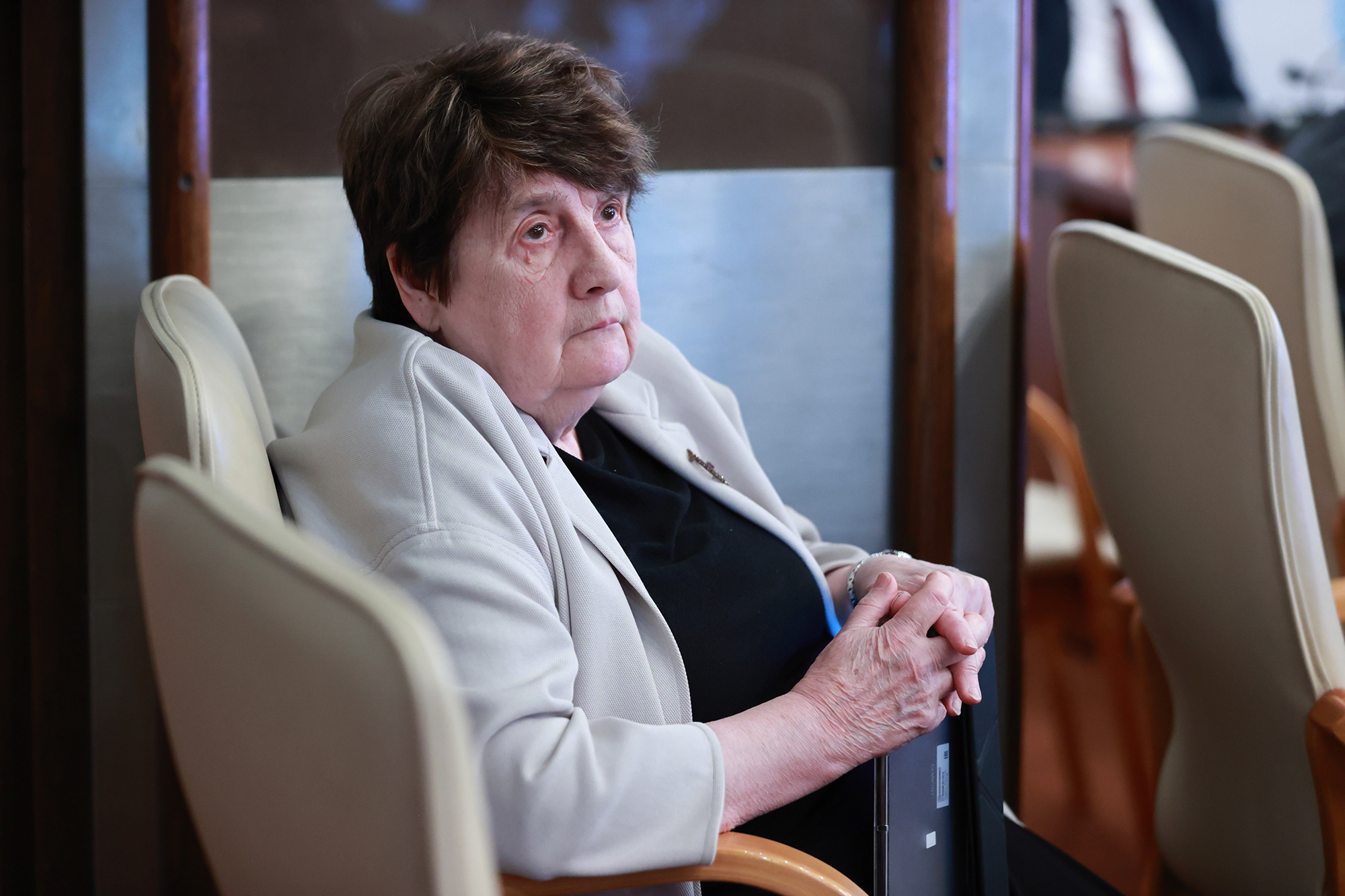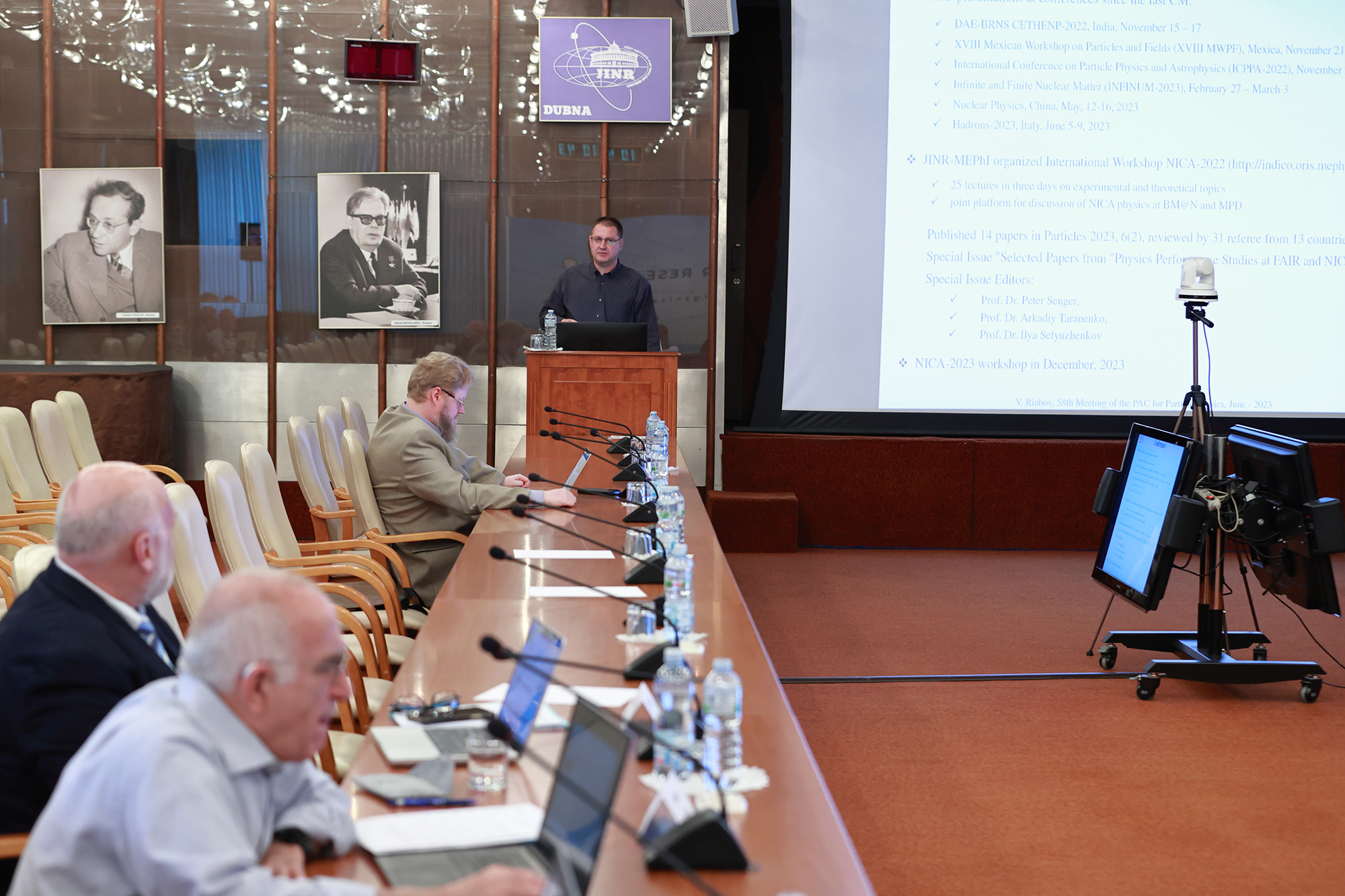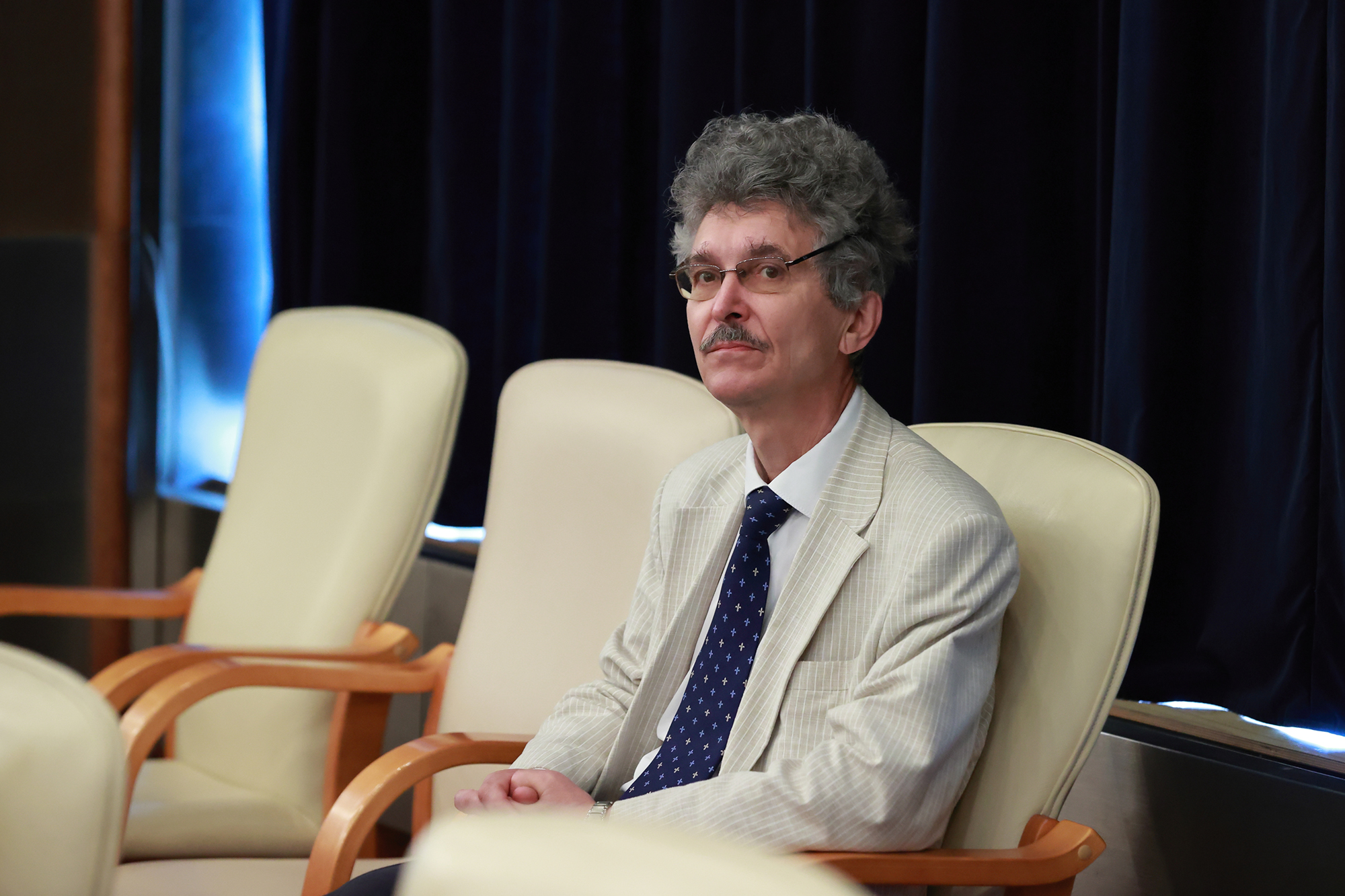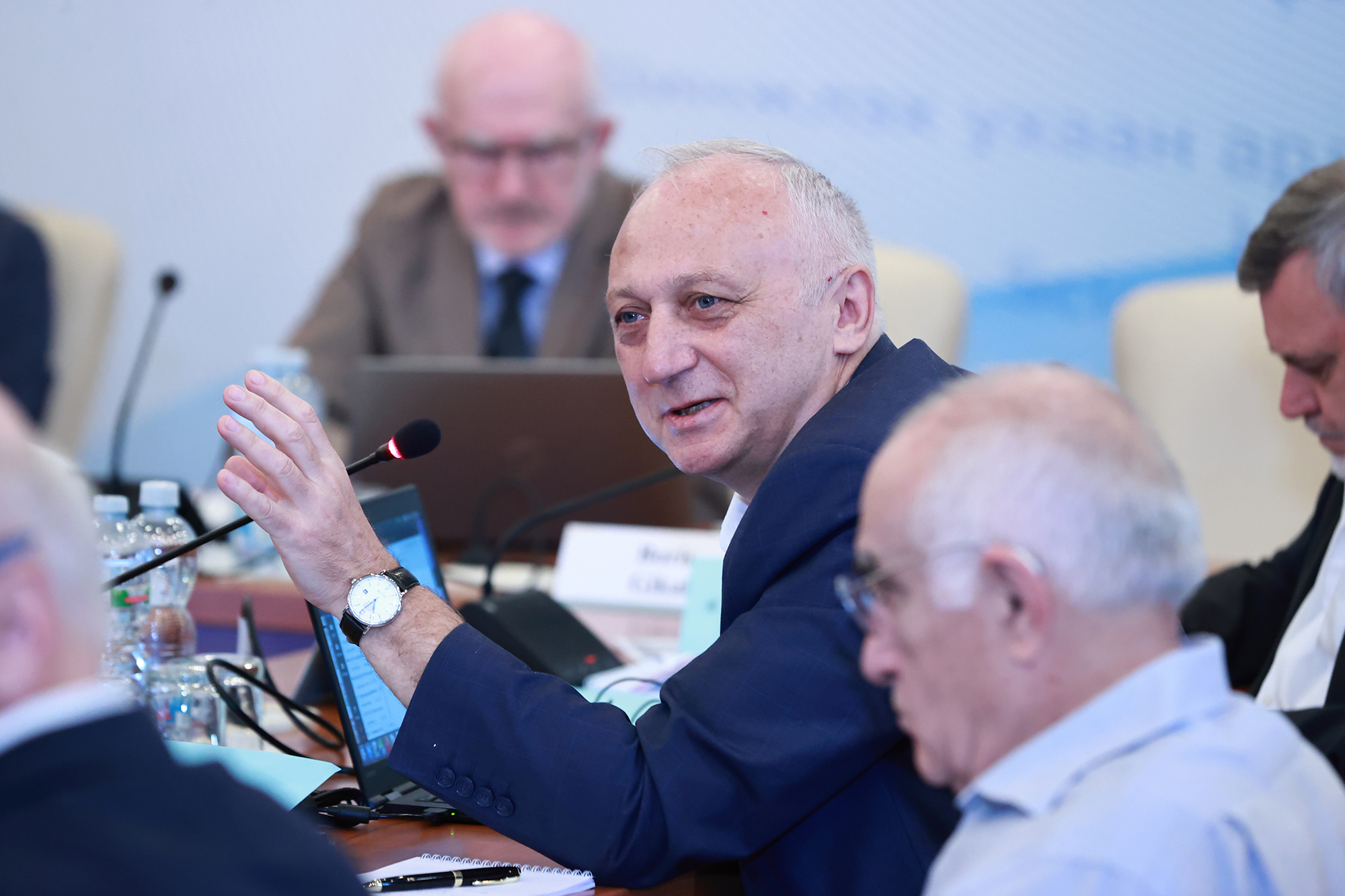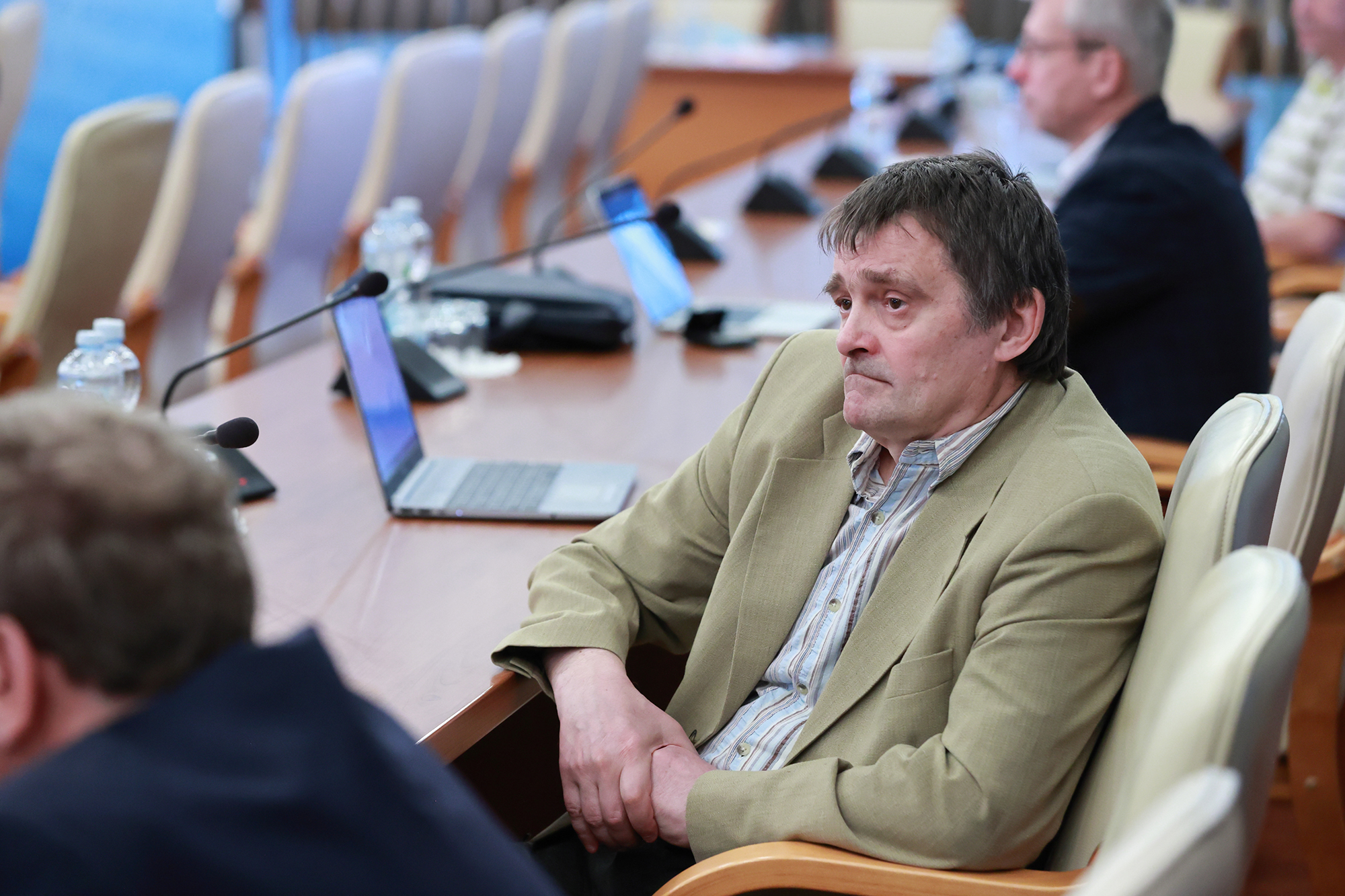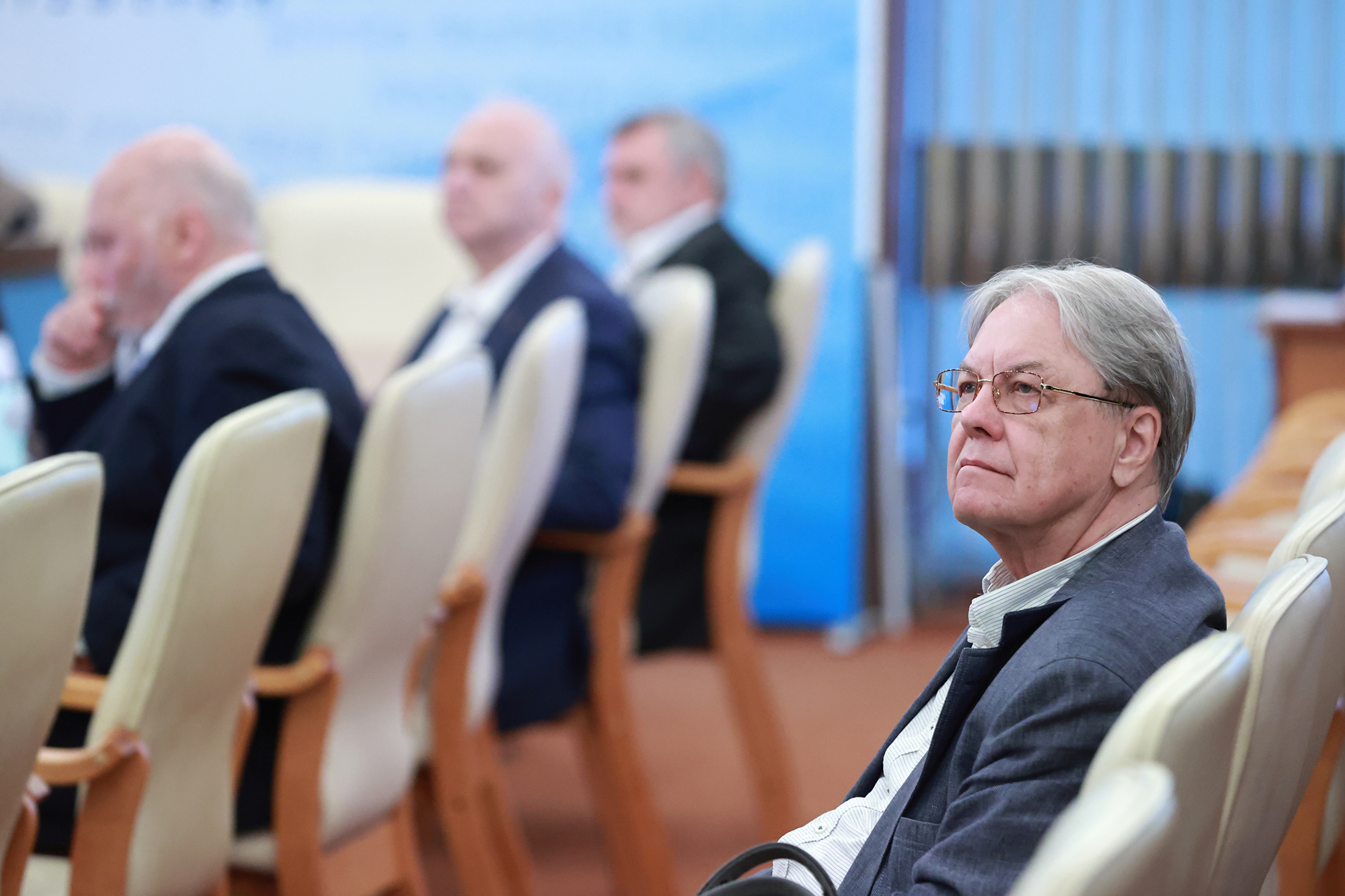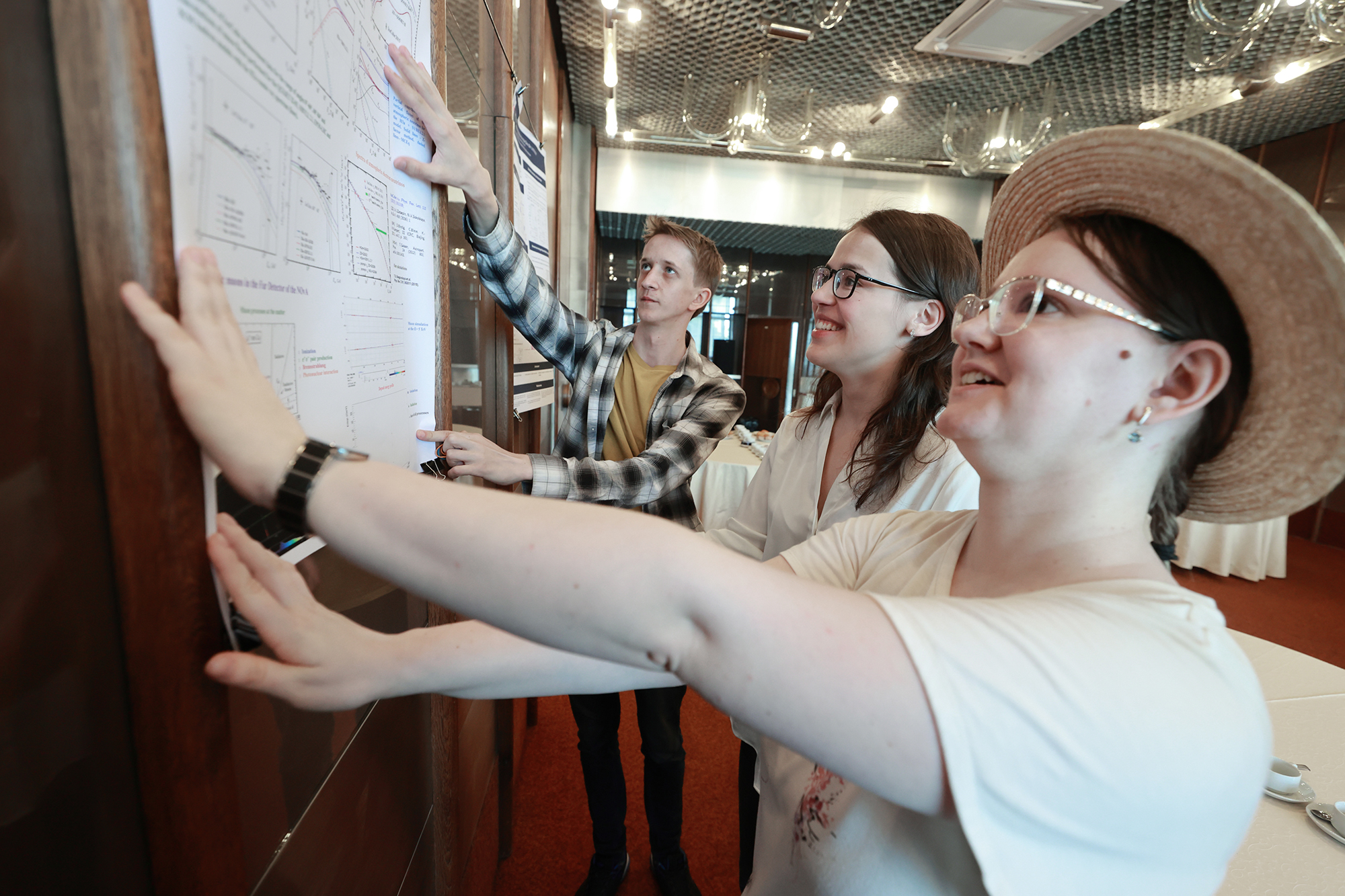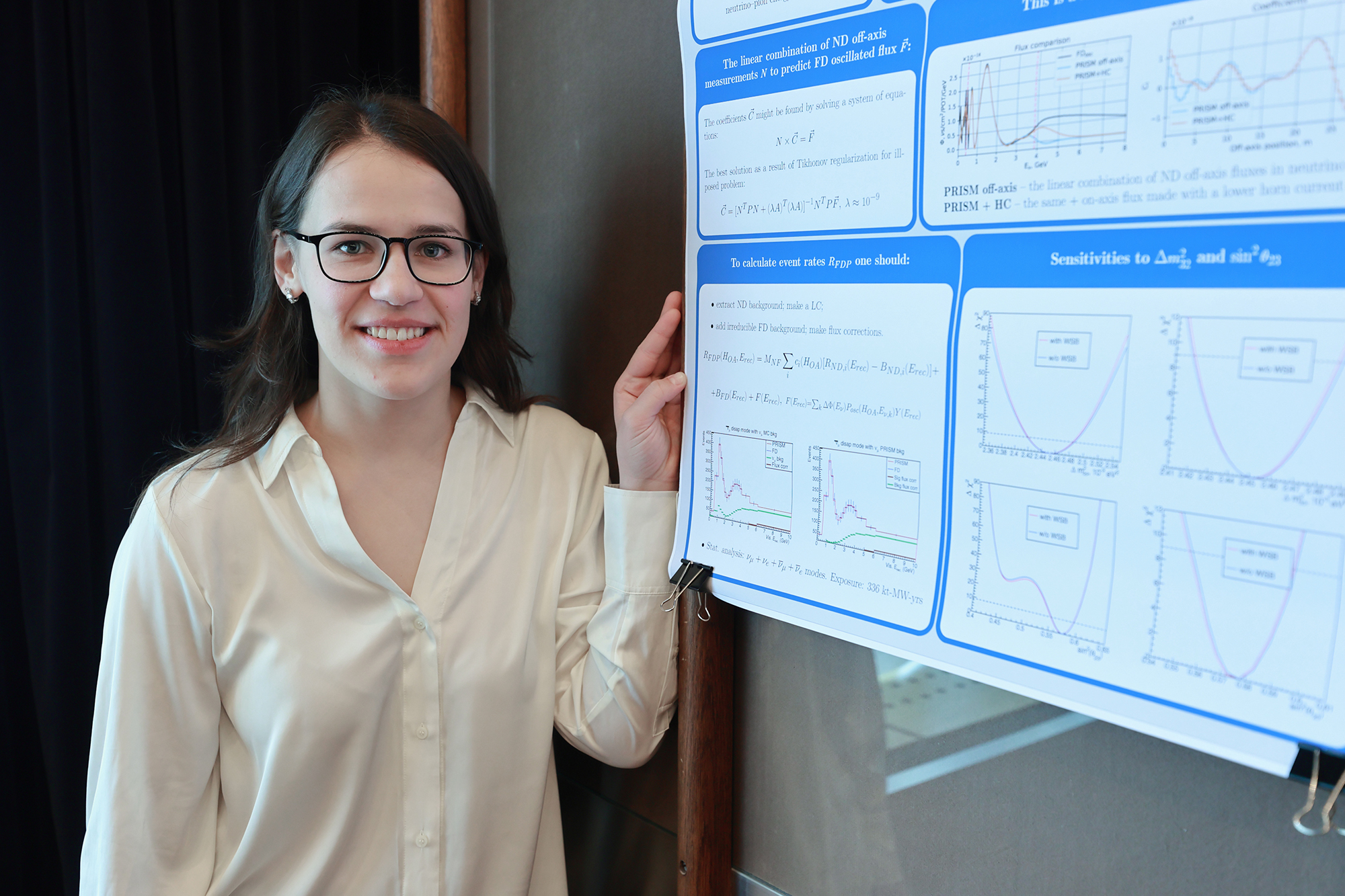NICA Project status and JINR’s participation in international projects discussed at PAC for Particle Physics
News, 23 June 2023
The key topics of the past 58th meeting of the JINR Programme Advisory Committee for Particle Physics were the status of the implementation of the NICA Megascience Project and results of scientific groups of the Institute achieved in the CERN experiments. Participants of the event considered the results of the concluding projects and proposals for opening new ones. Within the two-day programme of the meeting there was a meeting of the PAC members with the JINR Directorate and poster presentations by young scientists.
Opening the event, Chairperson of the PAC for Particle Physics Itzhak Tserruya welcomed the new members of the Committee and presented information on the implementation of the recommendations of the previous PAC meeting. The PAC members listened to the information presented by JINR Vice-Director Vladimir Kekelidze on the Resolution of the 133rd session of the Scientific Council (February 2023) and decisions taken by the Committee of Plenipotentiaries of the JINR Member States (March 2023), as well as on the updated draft of the Seven-Year Plan for the Development of JINR in 2024 – 2030.
“The major topic of the current meeting is related to the NICA flagship project. It should be noted that great success has been achieved over the past year. The entire part of the accelerator complex, except the collider itself and the extraction to the collider, has been successfully commissioned,” JINR Vice-Director Leader of the NICA Project Vladimir Kekelidze noted.
Deputy Head of the VBLHEP Accelerator Department Anatoly Sidorin made a report on the implementation of the Nuclotron-NICA Project of JINR. The international team of the project has carried out four runs at the accelerator complex. According to the results of the last one, the longest in the history of the Laboratory (September 2022 – February 2023), more than half a billion events were collected at argon beams. Within that run, the team of scientists managed to ensure simultaneous operation of all the elements of the heavy-ion chain of the complex, optimise the beam’s dynamics, cool down successfully heavy ion beams, test SOChI (Station Of Chip Irradiation), calibrate the new diagnostics system and modernise the vacuum system for beam cooling channels. Moreover, the ARIADNA programme of applied studies at extracted beams is being actively developed. A few days ago, a new partner from Russia the North Ossetian State University joined the Collaboration. Research continues within the BECQUEREL Experiment on the study of relativistic nuclei dissociation using tracks in nuclear emulsion.
One of the key aspects in the report on the NICA Complex was the timing for completing the assembling and beginning of the collider’s tests. “The installation of the cryomagnetic system will be possibly completed in April next year, after the collider’s building is fully ready,” Anatoly Sidorin commented, “As soon as it is done, we will carry out a technological run. In this case next year the VBLHEP team will be ready to hold the first run with a beam at the collider.” He also highlighted that it would not be an experiment nor the statistics acquisition. It will be a test of all the systems for the beam transfer from the Nuclotron into the collider.
A VBLHEP JINR chief engineer Nikolay Agapov spoke about the infrastructure enhancement, including the Nuclotron. He noted that due to the change in the schedule of engineering equipment supply the beginning of the construction of the NICA Innovation Centre had been postponed for early 2024 and would take a year and a half. The Arena Design Institute of Unique Structures LLC is fulfilling the project of the Centre. The construction of the collider’s building is at its final stage. The Austrian company STRABAG, which used to be the general contractor of this project since 2015, has announced that it cannot continue its activities due to external circumstances. Therefore, a new contractor will be selected in 2023. Final tests of engineering systems of the new building of the collider are scheduled for April-May 2024. In addition, the cryogenic system undergoes modernisation.
Presenting the status of the MPD NICA Project, Spokesperson of the Collaboration Victor Riabov (PNPI) announced that from 15 June the MPD Detector hall is closed for three months to apply fire protection coating to the ceiling of the hall. In this regard, the project team will cool the magnet down to the liquid helium temperature in the autumn this year. After that, at the beginning of 2024, specialists will measure the magnetic field. It is planned that by the end of next year the facility will be fully assembled. The commissioning of the detector and the first data taking are planned for 2025.
The BM@N Collaboration Leader, Head of the VBLHEP Scientific and Experimental Department of the Baryonic Matter at Nuclotron Mikhail Kapishin reported on the project’s implementation progress. At the moment, the international Collaboration of the experiment comprises 189 participants from 10 institutes of three countries. At the 10th Collaboration Meeting (May 2023), the Almaty Physics and Technology Institute joined the Collaboration as an associate member. By 2022, the BM@N team fulfilled the facility’s configuration with full acceptance of detectors. Experimental runs with deuteron, carbon and argon nuclei beams were conducted. The team successfully carried out a physical run with xenon beams. The Collaboration is going to conduct the study of hyperon, meson, light nuclear fragment production in interactions of xenon with caesium iodide. Participants of the experiment will determine the centrality of nuclear collisions at the facility and analyse the collective proton beam. The possibility of physical experiments at bismuth beams in 2024 will depend on the NICA Collider status. For this participants of the project are modernising the hybrid tracking system of BM@N by installing silicon detectors. Mikhail Kapishin noted that one of the most significant results obtained by the Collaboration was the preparation of an article on pion and kaon production in interactions of argon with nuclei at energies of 3.2 GeV for publication in the highly rated international Journal of High Energy Physics (JHEP).
SPD Collaboration Leader Alexey Guskov presented the updated technical design report (TDR) of the experiment, as well as reported on the major systems of the detector and the current status of works. The SPD Collaboration now consists of more than 300 participants from 32 scientific centres of 14 countries. This January, the Almaty Physics and Technology Institute and Tomsk State University joined the Collaboration, several memorandums of understanding were signed. According to Alexey Guskov, some changes took place related to the major systems of the detector, namely it was decided to make the superconducting magnet bigger and enlarge the muon system. Specialists modernised aerogel detectors. Moreover, it was decided to use time-of-flight chambers (ToF) and electromagnetic calorimeters (eCal) at the first stage of the experiment due to the interest in these technologies and potential physical results of the Collaboration participants, including from China. It should be reminded that these systems were initially planned to be used at stage 2 of the SPD configuration. The SPD Detector construction is expected to last until 2028, and the first stage of it will take place in 2028 – 2030.
JINR scientific groups continue their active participation in physical programmes of the ATLAS, ALICE, and CMS Experiments at the LHC at CERN. Boris Batyunya, Tatiana Lyubushkina, and Vladimir Karjavine made reports on the results obtained in these experiments. Reports on the projects terminating in 2023 and proposals for their extension were presented by Dmitry Peshekhonov (NA64), Sergei Afanasiev (SCAN-3), Igor Denisenko (BES-III), Artur Borodin (TAIGA), Dmitry Naumov (JUNO), Liudmila Kolupaeva (NOvA/DUNE), and Vladimir Korenkov (MICC).
Director of the Laboratory of Information Technologies JINR Sergei Shmatov made a proposal to open a new software project for modeling of physical processes and experimental facilities, processing and analysis of experimental data. Leader of the SPD Project Alexey Guskov presented to the PAC members a report on the prospects for further cooperation with CERN and participation of a JINR scientific group in the AMBER Project (NA66).
Director of the Laboratory of Theoretical Physics JINR Dmitry Kazakov presented the updated structure of the BLTP plan of scientific studies. Structural changes are related to the need for theoretical support of experiments at NICA, as well as increased interest in neutrino physics. The range of research of the Laboratory is wide. Active work is underway in the fields of quantum field theory, physics beyond the Standard Model, mathematical physics. Modern methods used for the study of gravitational waves and cosmology are not left without attention. Dmitry Kazakov reminded that the DIAS-TH (Dubna International School for Theoretical Physics) Department of BLTP had resumed its work after the pandemic. It implements educational programmes in various sections of theoretical physics for students, postgraduates, and young scientists.
Within the PAC meeting, there was a presentation of poster reports by young scientists on the projects in the field of particle physics. The PAC members met with the JINR Directorate. The adoption of PAC recommendations and proposals for the agenda of the next meeting concluded the event.
